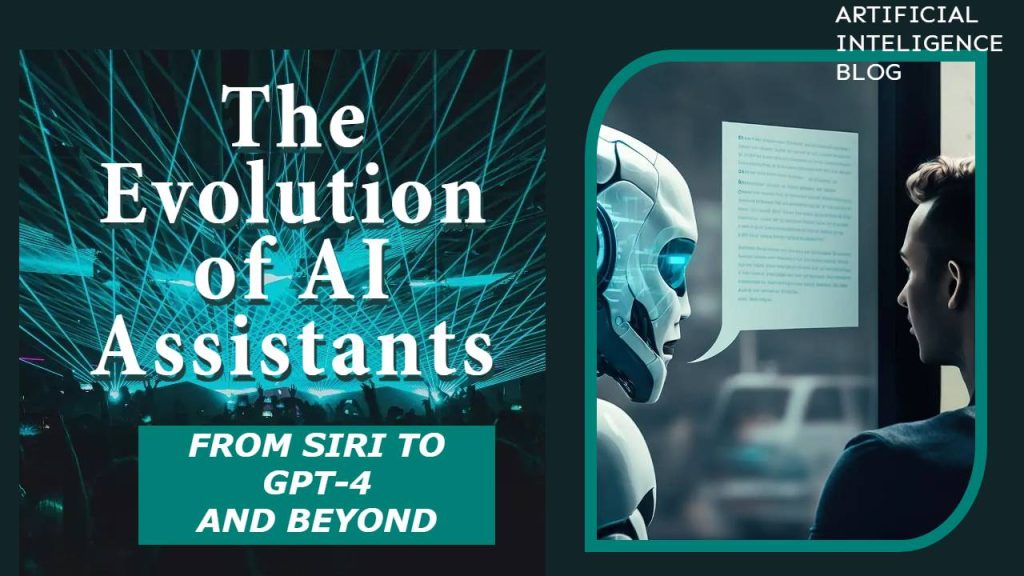Artificial Intelligence (AI) assistants have become an integral part of our daily lives. From setting reminders and answering questions to engaging in conversations, AI assistants have made our interactions with technology more seamless and natural. The journey of AI assistants started with basic voice-activated systems and has now evolved into sophisticated models like GPT-4, capable of deep conversations and advanced problem-solving. Let’s explore the evolution of AI assistants, from Siri’s introduction to the cutting-edge capabilities of GPT-4.
The Birth of AI Assistants: Siri (2011)
Apple’s Siri, introduced in 2011, was the first widely recognized AI voice assistant. Siri could perform tasks like sending messages, setting reminders, and answering simple questions. Although Siri’s capabilities were impressive for its time, it primarily relied on a programmed set of responses and didn’t exhibit the deeper understanding or contextual awareness that today’s AI systems possess.
Siri was groundbreaking because it made voice-based interactions mainstream, but it was still limited to surface-level tasks and couldn’t engage in complex conversations or learn from its interactions.
Google Assistant: Expanding Contextual Understanding (2016)
Launched in 2016, Google Assistant took AI assistants a step further by improving contextual understanding. Unlike Siri, which was heavily based on predefined commands, Google Assistant could follow conversations, allowing for more natural interactions. For example, users could ask follow-up questions, and the Assistant would understand the context of the previous query.
This marked a pivotal shift in the evolution of AI assistants. Google’s vast knowledge base, combined with improved machine learning techniques, allowed it to deliver more accurate and relevant information, making it a more powerful tool for users.
Alexa: AI in the Smart Home (2014)
Amazon’s Alexa entered the scene in 2014, introducing AI assistants to the smart home ecosystem. Integrated with Amazon Echo devices, Alexa could control smart home devices, order products online, and provide information on demand. Its open API allowed third-party developers to create “skills,” expanding its functionality far beyond what was initially envisioned.
Alexa’s contribution was the introduction of voice-activated technology into everyday home appliances, making AI assistants an integral part of modern smart homes.
Cortana: Integrating AI into Productivity (2014)
Cortana, developed by Microsoft, was designed to enhance productivity. Launched in 2014, it focused on integrating AI into professional environments, with features like calendar management, email drafting, and reminders. While it did not gain as much popularity as its competitors, Cortana demonstrated the potential of AI assistants in office environments and personal productivity.
The Leap to Conversational AI: GPT-3 (2020)
OpenAI’s GPT-3, introduced in 2020, marked a monumental leap in AI assistant capabilities. Unlike Siri, Google Assistant, or Alexa, GPT-3 wasn’t just a voice-activated assistant but a highly advanced conversational AI capable of understanding and generating human-like text based on a deep neural network architecture. With 175 billion parameters, GPT-3 could generate essays, write code, engage in complex dialogues, and answer intricate questions across a wide range of topics.
GPT-3 demonstrated the power of deep learning and neural networks in language understanding. It could engage in nuanced conversations and generate creative content, blurring the line between human and machine interactions.
The Emergence of GPT-4: Pushing the Boundaries (2023)
With the release of GPT-4, OpenAI pushed the boundaries of what AI assistants could achieve. GPT-4 improved upon its predecessor, GPT-3, with even more advanced understanding, reasoning, and problem-solving capabilities. GPT-4 introduced better contextual awareness, allowing it to follow long conversations and provide accurate, relevant responses even after multiple exchanges.
Moreover, GPT-4 was designed to be safer and more aligned with ethical AI practices, reducing biases and improving factual accuracy in its responses. This made it a more reliable tool for both professional and personal use.
Key Advancements in AI Assistants Over Time
- Contextual Awareness: Early AI assistants like Siri could only respond to specific commands. However, AI models like GPT-4 are capable of understanding context and engaging in natural conversations.
- Natural Language Processing (NLP): AI assistants have become more conversational thanks to advancements in NLP. They can now understand and generate human language with increasing fluency, enabling more meaningful interactions.
- Task Automation: Beyond basic tasks, modern AI assistants can automate complex workflows, from managing smart homes to generating content, writing emails, and assisting with programming.
- Learning Capabilities: AI assistants today have self-improving capabilities through machine learning. They can learn from user interactions to become more efficient and personalized over time.
The Future of AI Assistants
The evolution of AI assistants from Siri to GPT-4 has been nothing short of transformative. But the future holds even more promise. Here’s what we can expect from future AI assistants:
- Improved Emotional Intelligence: AI assistants may develop the ability to recognize and respond to emotional cues, making interactions more empathetic and human-like.
- Seamless Integration Across Devices: AI assistants will be more integrated into our everyday environments, seamlessly functioning across all devices and platforms, whether it’s a phone, smart home, or wearable.
- Autonomous Decision-Making: Future AI assistants might not just provide information but autonomously make decisions based on user preferences and habits. This could lead to proactive solutions, where the assistant anticipates needs and acts accordingly.
- Personalized Experiences: With more advanced machine learning algorithms, AI assistants will offer hyper-personalized experiences, learning individual preferences and adapting their behavior accordingly.
Conclusion
The evolution of AI assistants from Siri to GPT-4 has significantly shaped how we interact with technology. What started as simple voice commands has now evolved into dynamic, conversational AI systems capable of learning, problem-solving, and even generating creative content. As AI continues to evolve, AI assistants will become even more powerful, paving the way for a future where they seamlessly integrate into every aspect of our lives, from managing tasks to having meaningful conversations.
The journey from Siri to GPT-4 showcases the incredible advancements in AI technology, and the future looks brighter than ever for AI enthusiasts and everyday users alike.


